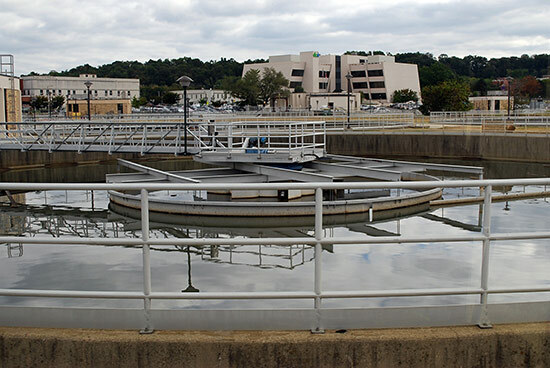Wastewater treatment plant cuts pollution in D.C.
Upgrades at Blue Plains will help the plant clean water and save energy.
The Chesapeake Bay watershed is home to more than 17 million people, each of whom is reliant on water. But as populations grow and communities expand, we send pollutants into our rivers and streams, affecting every drop of water in the region. How, then, do so many of us still have access to clean water? The answer lies within wastewater treatment plants.

One plant, in particular, plays a pivotal role in the region’s water quality. Located in Washington, D.C., the Blue Plains Wastewater Treatment Plant has served the D.C. metropolitan area since 1983. The plant receives 40 percent of its flow from Maryland, 40 percent from the District and 20 percent from Virginia. With the capacity to treat 370 million gallons of sewage each day, it is the largest wastewater treatment plant in the world and the only one in the nation to serve multiple states.
Recently, the District of Columbia Water and Sewer Authority—also known as DC Water—made technological upgrades to Blue Plains. Evidence shows these upgrades have already accounted for reductions in nutrient pollution and a resurgence in the upper Potomac River’s bay grass beds. Indeed, putting new wastewater treatment technology in place is a critical step toward meeting the pollution limits established in the Chesapeake Bay Total Maximum Daily Load. As of 2012, 45 percent of the watershed's 467 wastewater treatment plants had limits in place that met water quality standards.
Because of spatial constraints, many of upgrades planned for Blue Plains will focus on intensifying the wastewater treatment process. According to Sudhir Muthy, innovation chief for DC Water, the more concentrated the purification process is, the more energy efficient the plant can be.

For decades, the philosophy behind wastewater treatment plants has been to imitate those clean water processes that you might see in natural systems. Lately, there has been a shift in thinking about how wastewater is treated. Murthy explains: “Now, more attention is given to using the energy created within the treatment process to run the plant. [For example,] carbon has a lot of energy and is created during the treatment process. We are trying to harness [carbon’s] energy to help the plant run in a more energy-efficient way. We are now asking: How do we optimize the use of energy within the wastewater treatment process?”
Blue Plains hopes to become energy neutral in 10 to 15 years, and upgrades to reduce pollution and save energy will continue for years to come. A new tunnel will allow both sewage and wastewater to flow from the District to the plant, where it will be treated to reduce the flow of polluted runoff into the Potomac River. And a new process will recycle “waste” heat to “steam explode” bacterial sludge, turning it into a biosolid that can be mixed with soil, used as fertilizer and generate extra revenue.

“All processes use energy,” Muthy said. “But if you can find ways to offset or recycle that energy use, then you can move towards being more efficient.”

Comments
There are no comments.
Thank you!
Your comment has been received. Before it can be published, the comment will be reviewed by our team to ensure it adheres with our rules of engagement.
Back to recent stories